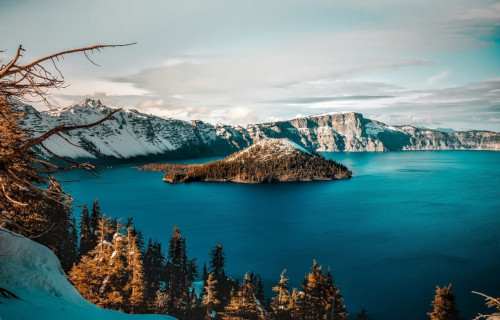
It’s our sincere hope that each of you, our readers, will thoroughly enjoy and appreciate this article we present about these 7 Captivating United States Lakes. It was certainly our pleasure to gather the information for you. May it serve to provide you with both education and increased awareness.
Certainly, these few formations listed herein represent only a miniscule portion of the similar marvels found throughout this amazing region. It’s our belief, though, that they serve as excellent representations of the features found here. Check out some of our other articles, as well.
Lake Tahoe
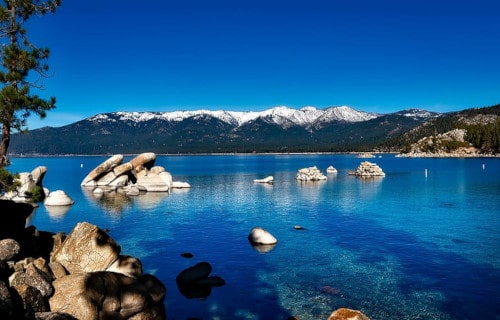
Lake Tahoe Facts
- Leading off this article about these 7 Captivating United States Lakes we present the stunning wonder best known by the simple term of Lake Tahoe.
- The deceptively simple name used herein serves as the english language name of this breathtaking creation of natural processes. This also constitutes the only currently accepted moniker for the natural marvel. That distinctive term, however, derives from a much older one.
- The ancient Native American inhabitants of the surrounding region long knew of its existence. In fact, the breathtaking actually lake served as the heart of the territory of the Washoe people. In their own native tongue, this true masterpiece of Nature bore the name of Dáʔaw.
- Understandably, several areas bordering the lake today still represent sacred sites to the tribe. One particularly large rock formation on the southeastern shore continues to be especially important to that group. Today, unfortunately, a highway tunnel now passes through it.
- European explorers, though, did not learn of existence of this geological masterpiece until much later. Lt. John C. Fremont became the first recorded non-native to see this geologic marvel. He encountered it during his second expedition to the region on February 14, 1844.
- Between the years 1880 and 1930 multiple attempts to have the site declared a National Park took place. Sadly, however, multiple factors prevented that approval from happening. In modern times its stunning natural beauty makes it an extraordinarily popular tourist attraction.
- Presently, over 75% of the land surrounding the watershed area of Lake Tahoe comprises National Forest land. The entirety of that region’s presently being overseen by the Lake Tahoe Basin Management Unit. That, in turn, represents a division of National Forest Service.
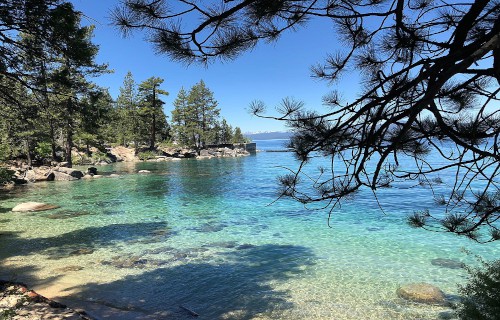
Photo: http://tahoesignatureproperties.com/
CCL: https://bit.ly/3LB99gP
Lake Tahoe Physical Description
The mesmerizing Lake Tahoe instantly captivates those individuals fortunate enough to visit the stunning site. Unlike some other locations, though, it does so for more than one reason. In its case, this body of water, and its surrounding terrain, impresses due to both beauty and size.
Its sheer physical dimensions clearly represent one of these statistics. To put this particular aspect into perspective, after only the Great Lakes themselves, this site holds thre greatest volume of any lake in its country. Its depth also ranks it as the second deepest within the same region.
The beautiful freshwater body currently boasts a maximum known depth measuring 1,645 ft (501 m). The formation also has an equally impressive average depth. This equates to approximately 1,000 ft (300 m). That makes this specific body of water the 16th deepest known lake on earth.
These statistics additionally rank it as the 5th deepest in the entire world in terms of average depth. In its region, only Crater Lake, itself a wonder of Nature, surpasses it in this category. Its overall surface area doesn’t fail to amaze, either. This totals an astounding 191 sq mi (490 sq km).
The overall shape of the gorgeous Lake Tahoe further displays a notably greatly elongated structure. This measures approximately 22 mi (35 km) in length and about 12 mi (19 km) in width. Its irregular shape and winding outline provide it with an impressive total of 72 mi (116 km) of coastline.
Lake Tahoe Location, Formation, and Ecology
The location of the jewel of geology known as Lake Tahoe probably comes as no great surprise to those who learn of it. That’s due to the fact that it formed in a portion of the globe already renowned for its abundance natural wonders. It formed as part of the continent of North America.
More precisely, this body of water lies within the boundaries of the country of the United States. There, its postion places it in the approximate northwest portion of the country. In point of fact, it roughly straddles the borders between the states of California and Nevada, west of Carson City.
Geological evidence indicates that the mesmerizing freshwater lake originally formed roughly 2 million years ago. It then represented part of what’s now known as the Lake Tahoe Basin. That area formed due to uplift motions by tectonic plates. Three main faults contributed to this action.
Subsequent glacial activity much later inexorably carved out the region as it essentially exists today. That activity ended roughly 15,000 years ago. The underlying rock strata also holds a primarily volcanic origin. Melting snows and rains continue to maintain the fantastic lake in its present form.
The region surrounding Lake Tahoe boasts a striking climate. Summers typically remain relatively dry and warm. The local winters, however, generally present quite chilly temperatures and frequent snowfall. A truly remarkable ecological balance therefore exists within its immediate zone.
Conifer forests dominate its surroundings. Numerous fields and meadows also appear. Several native fish species live in the cold waters of the lake. Bald eagles and North American Beaver also routinely make their homes here. Several known species of bear also live in the surrounding area.
Flathead Lake
Flathead Lake Facts
- Next up in this compendium of these 7 Captivating United States Lakes comes the lesser-known marvel named Flathead Lake.
- That somewhat unusual term currently serves as the most frequently used designation for this true marvel of geological processes. For the moment, though, this remarkable formation has no other generally accepted label in the english language by which it’s known.
- The beautiful body of water does have multiple other monikers in different languages, however. In the native tongue of local Indigenous Peoples it holds several, in fact. The Salish People know it as člq̓etkʷ, while the Kutenai refer to the lake by the term yawuʔnik̓ ʔa·kuq̓nuk.
- Regardless of what one chooses to call thhis marvel of geology, though, the lake remains a breathtaking site. Despite the presence of a hydroelectric dam, great care continues to be taken to maintain its state. Due to this, it ranks as one of the cleanest lakes of its size on earth.
- The native inhabitants of the region it appears in long knew of and appreciated its existence, of course. Vague records indicate that the first known outsider to learn of it was the surveyor Peter Fidler. It’s believed that he made the discovery sometime between 1790 – 1797.
- Fortunately, the magnificent Flathead Lake continues to enjoy a comparatively high level of protection from the depredations of man. That’s largely true since various local Native American populations still maintain a relatively high degree of involvement in its protection.
- Since 2015, a coalition consisting of several local tribes purchased and now operate the hydroelectric facility. These groups put extreme quality standards in place. Groups of the same tribes also preserve and protect a special reserve established in 1991 for the majstic Bald Eagle.
Flathead Lake Physical Description
The stunning Flathead Lake typically captivates those fortunate individuals enough to visit the site. Unlike some similar features located around the world, however, it does so for several reasons. That’s because it’s not merely beautiful, it also boasts highly respectable dimensions.
As a general principle, the wonder of Nature possesses a roughly rectangular shape. Several somewhat elongated protrusions from the main body do exist, though. The body of water additionally displays an extremely irregular outline, greatly increasing its actual amount of shoreline.
In length, the amazing body of water measures approximately 30 mi (48 km). Its overall width, however, equals roughly 16 mi (26 km). These particular statistics provide it with a notably impressive surface area. This aspect of the visual marvel stands at about 197 sq mi (510 sq km).
Yet, the impressiveness of gorgeous Flathead Lake doesn’t simply end there. That’s true since the spectacle also holds yet other surprising aspects. That pertains to its depth. Its maximum known depth reaches 370.7 ft (113 m). The average level also stands out, at about 164.7 ft (50.2 m).
Nature still isn’t finished with this amazing location, though. Situated within its watery confines, a total of a dozen small islands also exist. Combined, these islets contain a total surface area of 5.5 sq mi (14 sq km). The largest, named Wild Horse Island, comprises 3.4 sq mi (8.8 sq km) of this total.
Flathead Lake Location, Formation, and Ecology
The eye-catching beauty of Flathead Lake formed in a broader region of the world already renowned for its extreme abundance of geological wonders. In fact, that area likely won’t surprise many people. That’s because the lake lies within the boundaries of the continent of North America.
Inside of those confines, however, Nature created it well inside the borders of the United States. Its general placement further puts it within the northwest limits of the state of Montana. The organization of the country also places the state itself in the western part of the nation.
Much like many similar features found across the globe, this attention-grabbing lake formed due to glacial activity during the last ice age. Estimates therefore place the creation of the base in which the water now sits at roughly somewhere between the period of 12,800 – 11,550 years in the past.
Multiple geologic events subsequently created the site as it exists today. As the original glacier receded, a moderate portion remained in the region longer than others, due to the local landscape. The melting of that portion of the ice sheet eventually served as the origin of the present lake.
Like many bodies of water of its size, gorgeous Flathead Lake fully serves as the base of a flourishing ecosystem. In itself, it serves as home to a wide variety of life. This includes numerous native fish species, such as the bull trout. Due to stocking activities, other, non-native fish also appear.
Yet, the list of species it supports continues. Numerous insects make their home there, as well. Many species of mammals, such as the river otter, also make use of it, both for drinking purposes and for food. Several varieties of birds additionally depend on it for part of their survival.
Lake Itasca
Lake Itasca Facts
- Appearing here in this gathering of 7 Captivating United States Lakes we present the beautiful body of water known to many as Lake Itasca.
- The deceptively simple term given herein serves as the most frequently used common name for this lesser-known marvel of Nature. That’s the english language appellation for the lake, though. The ancient Indigenous Peoples of the region had several other names for it.
- The local Ojibwe People, along with other native groups, long knew of the existenceof this marvel og geology, of course. The name they applied to the remarkably beautiful lake was Omashkoozo-zaaga’igan. Loosely translated into english the lengthy moniker meant Elk Lake.
- Among non-native individuals, historians aren’t completely certain who spotted the stunning lake first. Though opinions vary widely, the majority of experts believe that fur trader William Morrison holds that distinction. He sighted it sometime between the years 1803 and 1804.
- No matter who saw it first, or when that sighting occurred, the formation holds a surprising importance in the region in which it lies. That’s because, despite its unassuming appearance, it technically qualifies as the source of the headwaters of the mighty Mississippi River itself!
- Its beauty and importance justifiably earns the stunning Lake Itasca its own appreciation. It now serves as the central feature of the aptly-named Itasca State Park. This fortunately provides the formation with a certain amount of protection from the depredations of man.
Lake Itasca Physical Description
The great natural beauty of Lake Itasca quickly captivates those individuals fortunate enough to visit the amazing site. Yet, unlike some similar features around the world, it does not do so due to its dimensions. That’s due to the surprising fact that, regardless of its importance, it’s relatively small.
It also stands out from most such bodies of water in regards to its general shape, as well. The same geological forces that created this wonder also gave it something of a unique T-shape structure. That section that constitutes the cap of the letter-shape quite distinctively tilts slightly to the left.
Its total surface area only measures a mere 1.8 sq mi (4.7 sq km). Despite the tiny volume of that aspect of the lake, its extraordinarily irregular outline still provides it with at least one respectable dimension. Impressively, this marvel still manages to boast a total shoreline of 14.3 mi (23 km).
Regardless of any other factors, the gorgeous Lake Itasca nevertheless manages to amaze many people due to another characteristic. That factor pertains to its depth. The beautiful tan remains quite shallow in its nature. Its depth also varies greatly because of changes in its own source.
As a general principle, though, that particular aspect only averages measuring between a mere 20 – 35 ft (6.1 – 10.7 m). Yet even at its deepest recorded section, however, its maximum depth has never exceeded 40 ft (12.2 m). Nature, though, has never associated size with impressiveness.
Lake Itasca Location, Formation, and Geography
The magnificent Lake Itasca formed in a region of the globe already renowned for its incredible abundance of widely varied geological wonders. That precise region won’t surprise the people who know of the Mississippi River, though. The site lies within the confines of the United States.
Therefore situated on the continent of North America, the captivating lake resides in the state of Minnesota. That itself sits in what’s considered the Upper Midwest section of the country. Its exact geographical location additionally places it in the general northwestern part of the state.
This small but disproportionately vital body of water itself owes its own formation to a very special set of circumstances. The nature of those factors also explain why the lake’s depth varies so significantly, as mentioned above. That’s because this marvel forms what’s known as a glacial lake.
During the last ice age, retreating glaciers slowly but irresistably carved out the basin where it sits. Following that, numerous naturally occuring springs provided roughly half the water to fill it. The remainder comes from rainfall. Since this varies, it accounts for the widely differing depths.
Even though the amazing Lake Itasca is small, it plays yet another important role. Its exact location coincidentally places it at the convergence of an astounding three distinct ecosystems. These consist of lovely regions of eastern deciduous forest, tall grass prairie, and coniferous forest.
Both flora and fauna common to all three types of region appear in abundance at and around the site. Along with the many grasses and trees, some of the plants present even include wild rice! Animals found here include deer, beaver, porcupines, black bears, wolves, and countless birds.
Crater Lake

Crater Lake Facts
- Our next choice for inclusion in this listing of these 7 Captivating United States Lakes is the breathtaking feature men call Crater Lake.
- Perhaps most notably, the mind-blowing site known by this informative title remains best known, and in fact quite famous, for two things. These aspects, quite understandably, consist of the gorgeous color and incredible clarity of the water contained within its boundaries.
- In fact, the magnificent lake routinely ranks in the top five in the world among bodies of fresh water with the greatest clarity. The famous distinctive bluish hue of the waters for which its world renowned occurs due to the combination of its great clarity and extreme depth.
- But, the remarkable uniqueness of this marvel of Nature does not end there. This wonder of geology also has two small islands situated within its beautiful confines. These two remarkable natural wonders bear the highly intriguing names of Wizard Island and Phantom Ship.
- Archaeological evidence clearly indicates that Native Americans knew of the gorgeous site now called Crater Lake for millenia prior to its discovery by non-native explorers. The local tribe, the Klamath people, in fact, knew the site by the name of giiwas in their language.
- The first recorded sighting of this tunning formation by an outsider, though, took place at the hands of a small group led by John Wesley Hillman. Gold prospectors at the time, the three men stumbled upon the natural marvel accidentally, in the year 1853, during their search.
- Due to its incredible beauty, this breathtaking location now represents the central piece of Crater Lake National Park. It understandably serves as one of the most popular tourist destinations in the region. Authorities nevertheless take pains to maintain its pristine state.
Crater Lake Physical Description
The astonishing Crater Lake almost instantly captivates those individuals fortunate enough to visit the mesmerizing site. The marvel does so at first glance, of course, simply due to its sheer beauty. Yet, this lake additionally does so when they learn more of its physical attributes and statistics.
Perhaps chief among these stands the fact that, along with its magnificent visual splendor, comes the discovery that it’s also the deepest lake in the country it formed in. In the deepest recesses of its clear waters, the bottom lies an astounding 1,949 ft (594 m) below the water’s surface!
This ranks the amazing formation as the ninth in the entire world in terms of its depth. But, that isn’t its only distinctiveness, to be certain. The wonder also has a relatively large overall area. The lake additionally has a slightly rectangular shape, measuring roughly 5 mi by 6 mi (8 by 9.6 km).
One of the most striking features of this stunning body of water continues to be the intense blue color of that liquid. The lake’s clarity and deep blue hue form due to its purity and depth. This specific combination allows sunlight to penetrate deeply and scatter blue wavelengths.
Fantastic Crater Lake also qualifies as unusual for yet another intriguing reason. It actually has no bodies of water flowing into it. In a remarkable natural balance, evaporation’s roughly compensated for by regular rainfall and melting snow. This makes it one of the few such lakes on earth.
Within the lake itself lie the two notable islands mentioned, Wizard Island and Phantom Ship. Wizard Island’s a cinder cone that rises about 764 ft (233 m) above the water’s surface. But, Phantom Ship, is a small rocky island resembling a ghost ship, with spires rising from the water.
Crater Lake Location, Formation, and Ecology
The breathtaking Crater Lake formed in a region of the globe already well known for its great abundance of marvelous geological wonders. That area therefore won’t surprise too many of our readers. That’s because it sits within an area of what’s now the continent of North America.
More precisely, Nature created the magnificent pristine lake in what now constitutes the state of Oregon, located in the United States. That particular state sits in the far northeast portion of the country. The body of water itself, furthermore, lies roughly in the south-central region of that state.
Amazingly, this lake sits inside the caldera of an extinct volcano, named Mount Mazama. This volcano apparently erupted quite violently approximately 7,700 years ago, leaving the namesake crater. Part of the Cascade Range, this volcano has now been completely quiet for about 6,000 years.
Nevertheless, Nature constantly keeps us on our toes. Minimal amounts of geothermal activity still routinely appear along the floor of the breathtaking mountain lake. This further indicates that, although considered unlikely, the volcano holds the potential to perhaps one day erupt again.
The waters of Crater Lake also nourish and support a fully thriving ecosystem. Due to the nature of its origins, of course, no native fish species exist within its confines. Several were introduced, however, with two species still surviving. The endemic Mazama newt does live there, though.
Obviously, however, since its formation, numerous types of phytoplankton and microscopic algae have slowly developed in the lakes waters. With their persistent presence, the lake also now directly supports sizeable populations of various zooplankton, small crustaceans, and insect larvae.
The dense forests surrounding and nourished by it are largely dominated by various coniferous trees such as Douglas fir, white fir, and ponderosa pine. These forests, in turn, provide a safe habitat for a variety of wildlife species. Those fauna include black bears, deer, and numerous bird species.
Lake Superior
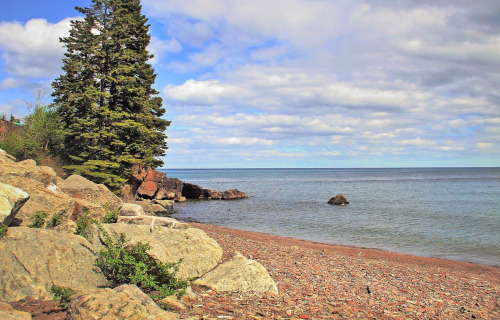
Lake Superior Facts
- Next up in this compilation of 7 Captivating United States Lakes is the aptly-named water-based marvel called Lake Superior.
- This dazzling body of water that so thoroughly boggles the mind with its immensity is now known by the appropriate name shown here. In the past, though, this majestic creation of natural processes bore another name that has unfortunately been completely forgotten.
- That’s because, for countless centuries, this wonder bore a name derived from the language of the local Indigenous Peoples. The Ojibwe, a tribe of the Anishinaabe nation, referred to the amazing lake by the title gichi-gami. Intriguingly, in their language, this term meant great sea.
- For the meomtn, the name of the first European to encounter this wonder of Nature remains a matter of some debate. This occurs due to the existence of few records of the time period. For the moment, the French explorer Etienne Brule holds credit for the first sighting, in 1620.
- It also forms one of a total of five, interconnected, gargantuan bodies of freshwater currently known to exist. They’re by far the largest in their entire region of the world. Collectively, these products of time and natural processes understandably bear the name the Great Lakes.
- Rankings of bodies of water vary, based on different criteria, though. Magnificent Lake Superior, however, appears very high near the top of any such list. It ranks as the third-largest on earth in terms of volume. It does, however, rank as the largest on earth in terms of surface area.
Lake Superior Physical Description
The magnificent Lake Superior easily merits attention and appreciation for a wide and varied list of factors. Although sheer size isn’t the only reason among them, it certainly stands out. The beautiful lake has a total surface area that roughly equals an astounding 31,700 sq mi (82,000 sq km)!
It’s dimensions vary quite significantly, though, as well. Overall, however, this majestic formation has a somewhat oval shape to it. The maximum length of the feature also measures approximately 350 mi (560 km). Its greatest measured width, meanwhile, equals roughly 160 mi (260 km).
While not quite as deep as a few other lakes situated around the world, it nevertheless boasts some truly impressive statistics there, as well. That’s due to the fact that it possesses an average depth of roughly 483 ft (147 m). Its maximum known depth, though, comes in at 1,333 ft (406 m).
The volume of the breathtaking Lake Superior also merits a full degree of appreciation and respect. That’s because, in total, the body actually holds an average of 2,900 cubic mi (12,100 cubic km) of water. Due to such massive volume, this natural feature holds 10% of all known surface freshwater.
Its wonders don’t end there. This incredible lake further holds a remarkable 400 islands! While most remain quite small, a few have respectable dimensions. The largest of these features bears the impressive sounding name of Isle Royale. It itself measures approximatley 207 sq mi (536 sq km).
This part of the stunning lake additionally holds yet more marvels to behold. That’s due to the incredible fact that the island also boast several small lakes of its own. Amazingly, some of these many small lakes, formed on an island in the lake, also have several small islands themselves!
Lake Superior Location, Formation, and Ecology
The awe-inspiring body of water currently known by the name of Lake Superior formed in a region of the globe already well known for its abundance of natural beauty. More precisely, this stunning example of Nature formed on what now bears the name of the continent of North America.
Its boundaries also exist within the borders of two separate countries located in the region. The majority of it exists within the United States, however. There, the lake sits in parts of the states of Minnesota, Wisconsin, and Michigan. A small part, though, is shared by Ontario, in Canada.
Its name, moreoever, refers to much more than just its comparative size. This fact holds true due to its placement, relative to the other four of the aptly-named Great Lakes. That’s due to the facts that it’s both the northernmost and the westernmost of them. It’s also the highest in elevation.
This marvelous lake also has an in-depth, ancient history, as well. It’s northern shore, in fact, forms part of what’s named the Canadian Shield. This feature formed due to volcanic activity occurring around 2.6 billion years ago. Subsequently, around 1.1 billion years ago, the continent drifted apart.
Subsequent to that, though much later, the current geographical features formed due to powerful glacial activities during the last Ice Age. At one point, about 1.6 million years ago, ice covered the region to depths of as much as 1.25 mi (2 km). This then melted, around 10,000 years ago.
Currently, an astounding total of more than 200 different rivers feed into Lake Superior, maintaining its volume. It further possesses an average surface altitude measuring 600 ft (183 m) above sea level. Its water levels understandably fluctuate, sometimes sharply, due to environmental factors.
Its enormous size even serves to moderate the general climate in the surrounding region. This action also provides for a relatively stable environment for local wildlife. This includes an extensive variety of fish species within the lake. Currently, more than 80 species of fish call the lake home.
Yellowstone Lake
Yellowstone Lake Facts
- Now making its presence known in this grouping of 7 Captivating United States Lakes comes the appropriately-named feature termed Yellowstone Lake.
- This marvelous product of natural forces most frequently goes by this highly informative common name for excellent reasons. It’s also known by a few other similar titles, though. These include such alternate terms as Eustis Lake, Sublette’s Lake, as well.
- Regardless of which of these individual monikers one chooses to use, the feature remains a marvel of Nature. It also stands out from similar works of geological actions in its immediate region. That’s because it’s the largest of all such lakes found in the area in which it lies.
- Local populations of Indigenous Peoples long knew of and made use of the stunning site. In fact, archaeological evidence indicates their active presence near and around the gorgeous body of water as far back as 11,000 years ago! At least 26 tribes still claim association with it.
- The earliest known recorded sighting of it by a European explorer, however, only occured in the year 1836. At that time, a trapper named John Colter noted spotting the tarn in his journal. It’s possible, though, that unrecorded sigtings by other trappers happened as early as 1820.
- Today, the breathtaking Yellowstone Lake understandably forms one of the central components of the similarly-named Yellowstone National Park. Given the geography of that site, it also represents the largest freshwater body above 7,000 ft (2,100 m) on its continent.
- Today, the mesmerizing formation constitutes an extremely popular recreational site. This situation, of course, presents multiple complications for those who strive to maintain its pristine condition. The Park Service does its best in this regard, but visitors must do theirs, too.
Yellowstone Lake Physical Description
The fabulous Yellowstone Lake quickly immediately captivates and fascinates those individuals fortunate enough to visit the body of water. Yet, unlike some similar features around the globe, it does not do so only due to its beauty, though it certainly possesses that attribute in great quantity.
That’s true since this large body of water boasts some relatively impressive dimensions. Visually, the marvel has a somewhat compressed rectangular shape to it. It also holds a width approximately 70% that of its length. The actual physical boundaries vary significantly around its course, naturally.
In total, though, the beautiful lake measures roughly 20 mi (32 km) in average length. Its width, however, equals about 14 mi (22.5 km). The extent and irregular nature of its shoreline provide it with another remarkable statistic. It boasts a total of approximately 141 mi (227 km) coastline.
All of these amazing statistics serve to provide the eye-catching Yellowstone Lake with yet more attention-grabbing qualities. The beautiful pool displays a surface area that averages roughly 132 sq mi (342 sq km). That naturally varies slightly due to various environmental conditions, though.
The feature’s also moderately deep for a lake of its specific type. The average measurement of this particular aspect equals roughly 139 ft (42 m). In places, however, the floor drops away precipitously. In some of these locations its waters reach depths equaling up to as much as 394 ft (120 m).
Yellowstone Lake Location, Geology, and Ecology
The remarkable Yellowstone Lake formed in a region of the globe already renowned for its abundance of natural marvels. The exact location of that area of the earth’s surface might still surprise a few people, though. It resides in a gorgeous part of what’s now North America.
More precisely, this geological masterpiece of time and irresistable forces formed within the national borders of the United States. There, it sits in the approximate northeastern portion of the country. Nature further created it in the northwest corner of the state of Wyoming, near the border.
The surface of this stunning lake typically remains quite placid and serence, yet what lurks beneath remains quite different. Its waters merely serve as a figurative mask for what lies beneath. That’s because the bottom of the formation boasts features similar to the rest of the amazing region!
An incredible array of underwater hot springs, fumaroles, and even geysers dot the individual sections known as Mary Bay, Sedge Bay, and West Thumb. Mary Bay additionally hosts multiple hollow silica chimneys. Meanwhile, Bridge Bay holds rock spires, some reaching up 20 ft (6.1 m) tall.
The impressive Yellowstone Lake also hosts a thriving ecosystem of its own. Several native species of fish appear within the waters of the formation. Cutthroat Trout represent the most abundant of these, with the local population presently being the largest known to exist in North America.
This marvel of Nature also plays a role of vital importance in the lives of numerous other animals, as well, mainly mammals. Larger creatures commonly present include bison, bighorn sheep, and elk. Yet smaller one’s such as the North American Beaver, otters, and weasels also frequwntly abound.
Mono Lake
Mono Lake Facts
- Closing out this article about these 7 Captivating United States Lakes we present perhaps the most distinctive member of the list, the amazing Mono Lake.
- The relatively simple term used herein represents the name of a particularly impressive, and quite distinctive, body of water. Despite the comparative harshness of the immediately surrounding environment, the amazing site contains a unique form of beauty all its own.
- The asstounding geological formation also has a highly unique history, extending far back into the distant past. In more modern times, ancient Native Americans, especially of the Kutsadika’a tribe of the Paiute Nation, knew of and lived around the truly remarkable site.
- Much later, European explorers later discovered it while venturing into the area in the 1880’s. At that time, the duo of Edward S. Dana and Israel C. Russell provided the first recorded description of the lake. They also remarked on some of its extremely unique formations.
- Beginning in the year 1913, however, the city of Los Angeles began the process of diverting water from the previously pristine lake. This action had the unfortunate, but not surprising, effect of threatening the extremely fragile and unique alkaline ecosystem existing there.
- Later, though, in 1994, a wonderful win for the environment and those who support its preservation occurred. At that time, a newly strengthened conservation movement succeeded in halting any further diversion of the remarkable waters of Mono Lake for human uses.
- Since that time, water levels have begun, and continue to, slowly climb back toward historic levels. They’ve not yet reached those heights, though. As a result, exposed shorelines continue to be a source of alkaline dust that can be carried aloft by strong winds in the region.
Mono Lake Physical Description
The eerily beautiful Mono Lake never fails to capture the instantaneous attention of anyone fortunate enough to visits the site. That holds true due to a combination of incredible factors, though. Certainly it boasts a respectable size, but it’s visual distinctiveness entirely sets it apart.
This otherworldy natural feature actually represents a small part of a much larger basin possessing no outlet to the ocean. This basin originally formed via the actions of geological forces that took place over the past five million years. The lake itself formed approximately 760,000 years ago.
The steady runoff from enormous salt deposits in the region over vast spans of time inexorably made this body of water extremely alkaline in nature. The captivating site also continues to remain somewhat geologically active, with the most recent eruption occurring just over 350 years ago.
That latest eruption further formed yet another remarkable feature residing within the lake itself. That’s a small island bearing the name of Paoha Island. But its marvels do not simply end there, since numerous amazing limestone towers also appear all along the perimeter of the incredible lake.
Mono Lake also boasts some comparatively impressive physical statistics. Presently, the site covers an area measuring roughly 70 sq mi (181 sq km). Its maximum known depth currently sits at approximately 600 ft (183 m), and the surface sits at an altitude of 6,380 ft (1,945 m) above sea level.
Mono Lake Location and Ecosystem
The eerily magnificent body of water known as Mono Lake formed in an area of the world already well known for its extraordinary abundance of geological splendor. To the surprise of many, given its unique nature, the lake formed in part of what now constitutes California, in Mono County.
More precisely, this zone itself forms a state in the United States, situated in North America. This fact may surprise many people, given the standard image of that specific region of the country. However, the greater area also has some desert regions, one of which serves as home to this site.
Despite being part of a localized desert environment, this natural marvel serves as home to a fully thriving ecosystem. Fish cannot live in these waters, but Nature nonetheless adapts. At the heart of this astonishing system is the presence of a vast population of a diminutive brine shrimp species.
These actually represent an indigenous creature that surprisingly not only survives, but thrives in the lake’s alkaline waters. These tiny crustaceans, which measure about the size of a fingernail, remain inedible to humans. Numerous shorebirds, however, easily and frequently thrive on them.
An enormous volume of microscopic algae also lives within the unique waters of the lake, sometimes creating a dramatic effect. The presence of such a quantity of algae has the unfortunate effect of occasionally turning it bright green in color. The native crustaceans feed on the algae.
The enormous quantities of these invertebrates, believed to possibly number as many as six trillion, populate the lake and provide an essential food supply for many shorebirds during their migrations. Each year, as many as two million of these avians pause at Mono Lake to rest and feed.
7 Captivating United States Lakes
We truly hope that each of you greatly enjoyed reading, and hopefully learning something from, this article we’ve written about these 7 Captivating United States Lakes. It’s also our fervent hope that doing so has left you with either a new or renewed appreciation for such wonders of Nature.
Unfortunately, many other such features in various places around the world now find themselves facing severe threats to their continued existence in an undamaged state. Many of those dangers, in fact, stem from the actions of mankind. We must do all we can to protect and preserve them all.
Check out our other articles on 3 Wondrous South American Waterfalls, The Mighty Tornado, 4 Delightful Desert Plants, Spectacular Dolphins Throughout Our World
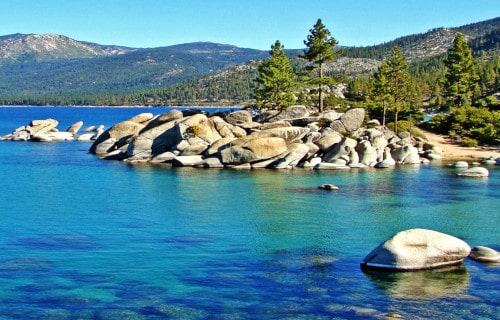
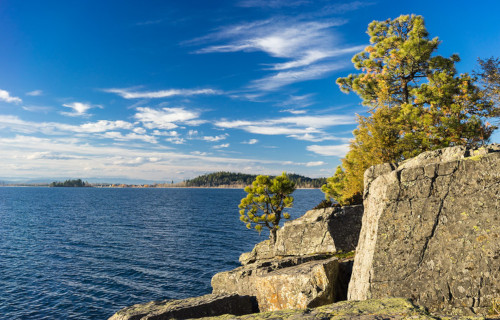
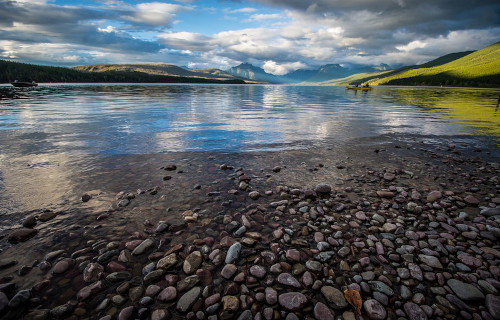
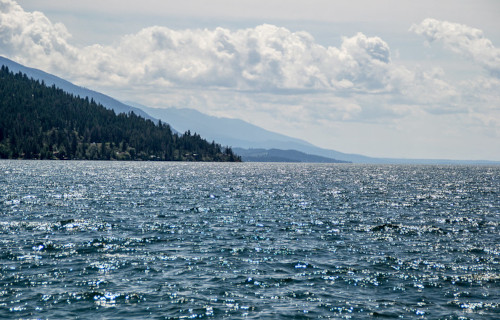
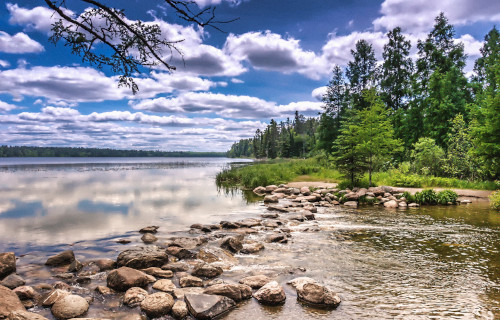
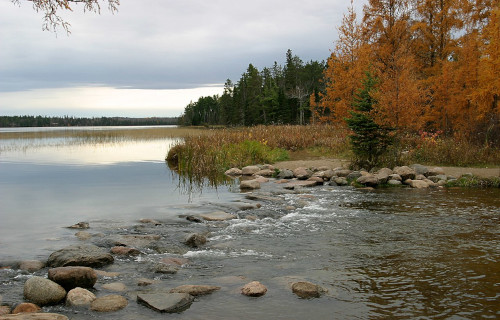
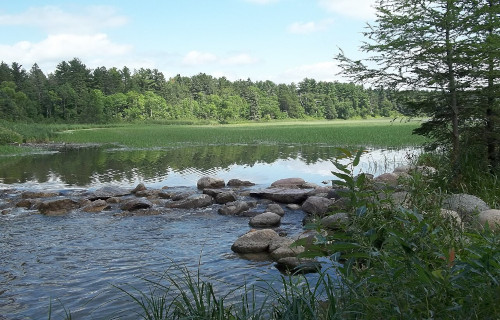
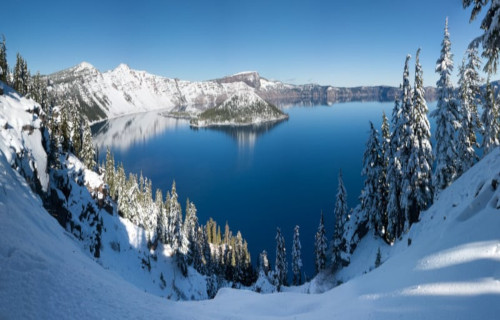
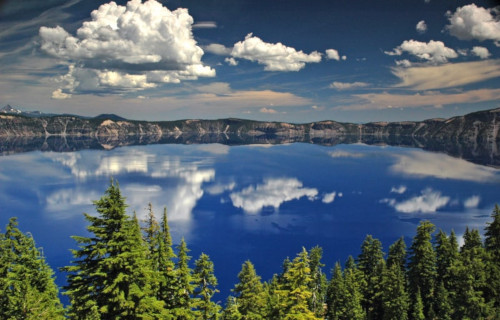
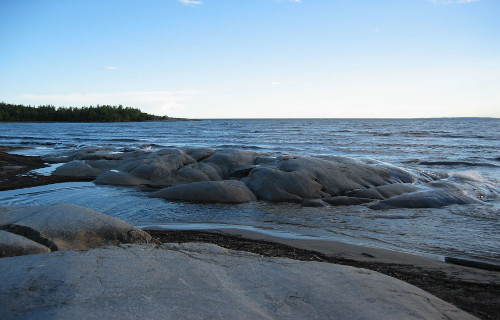
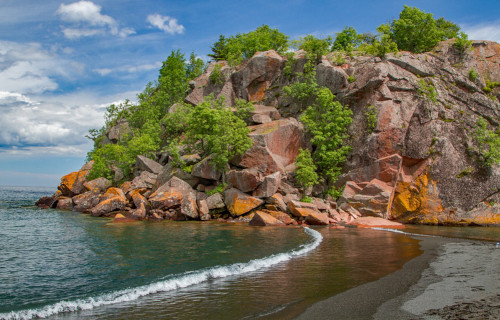
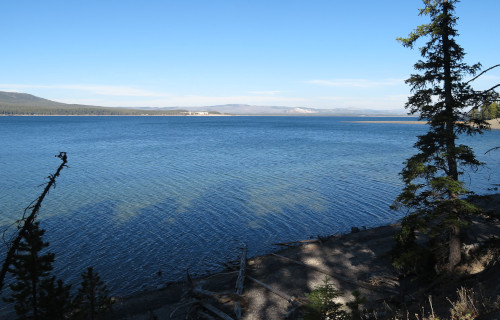
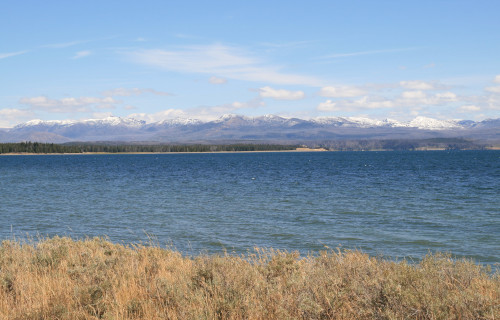
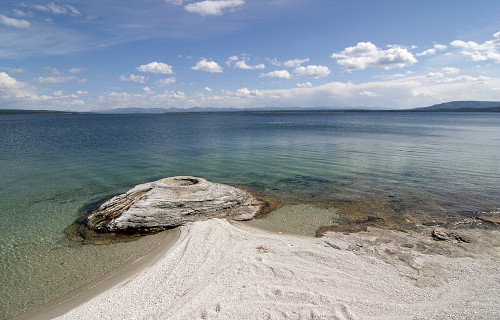
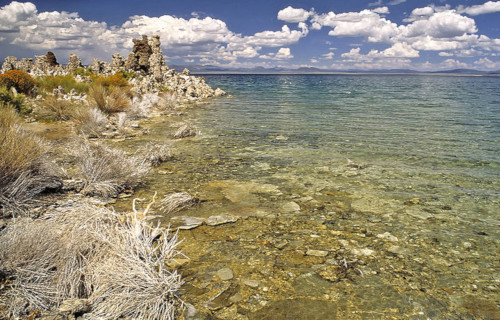
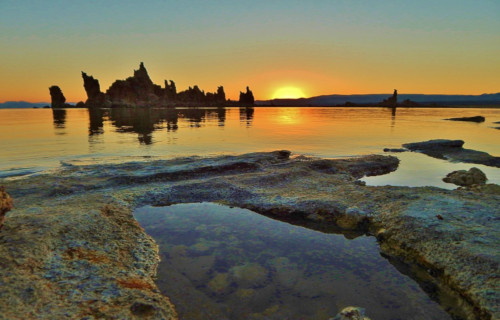
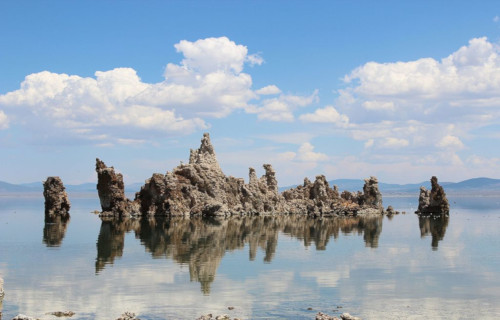









Leave a Reply